University of Arizona researchers explore how navigation shapes the brain
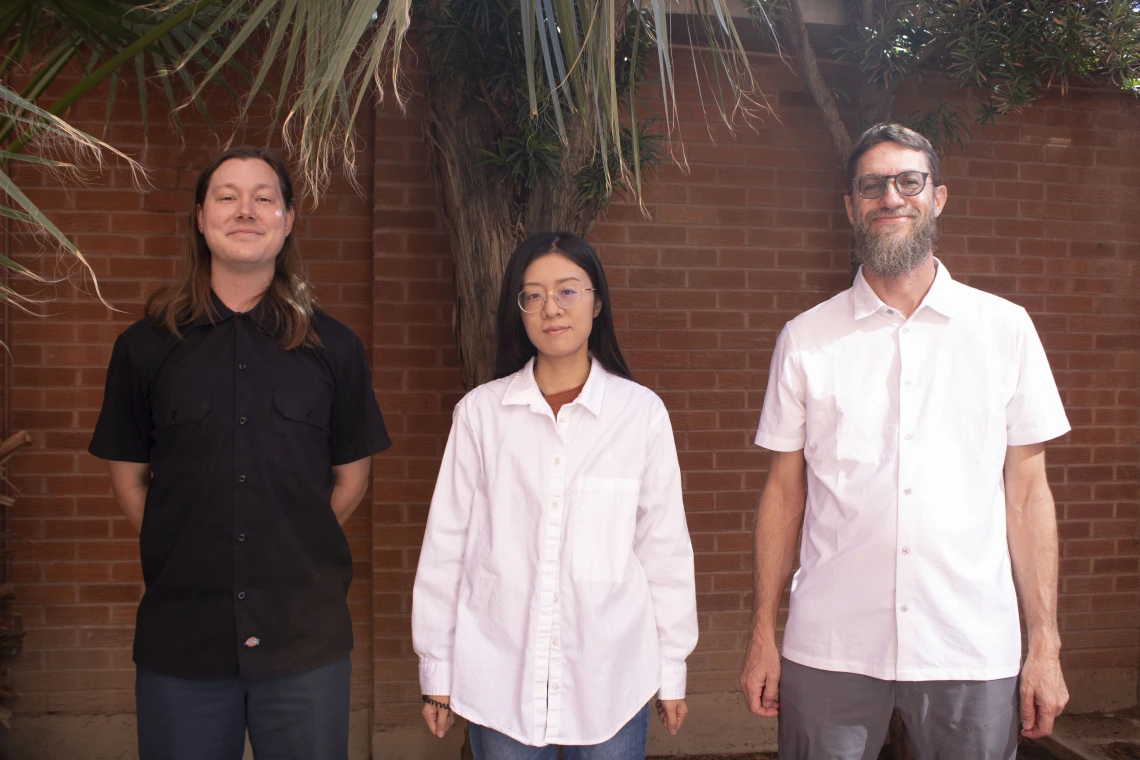
Research specialist Joshua Garren, research scientist Dr. Li Zheng, and principal investigator Dr. Arne Ekstrom are apart of a team of researchers at the University of Arizona’s Human Spatial Cognition Laboratory studying how navigation and memory training shape brain connectivity.
McKenna Manzo
When you walk across campus, drive a familiar route, or remember where you left your keys, your brain is quietly solving complex problems of space and memory.
At the University of Arizona, researchers are working to understand how these abilities change the brain and how that knowledge could someday help people facing memory loss or dementia.
The study explored how training in memory and navigation impacts brain structure and connectivity. The study was led by Dr. Arne Ekstrom, professor of psychology and director of the Human Spatial Cognition Laboratory, and Dr. Li Zheng, a research scientist, in collaboration with Dr. Steven Weisberg, professor of psychology at the University of Florida and co-senior author, as part of a partnership between the University of Arizona and the University of Texas, Arlington.
The highways of the brain
“We expected to see growth in the hippocampus because past studies showed that intensive navigation training, like what London taxi drivers experience, increases its volume,” Ekstrom said. “But what we found was that the structure itself didn’t change. Instead, the connections between brain regions did.”
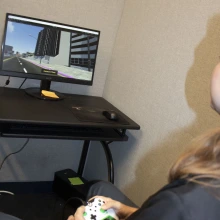
A view of the virtual “mock city” where participants navigate digital streets to help researchers study how the brain maps and remembers space.
McKenna Manzo
The hippocampus, a small structure deep in the brain, is critical for forming memories and navigating environments. While the volume of the hippocampus remained stable, the “highways” that link it to other regions became stronger.
“You can think of it like cities and roads,” Ekstrom explained. “We didn’t see the cities getting bigger, but the highways between them became more active. The communication between brain regions improved.”
Training the brain
For the study, young adults underwent 10 days of training designed to strengthen memory and navigation skills.
The results showed that people with larger hippocampi learned more quickly. This finding could help tailor cognitive training to individuals.
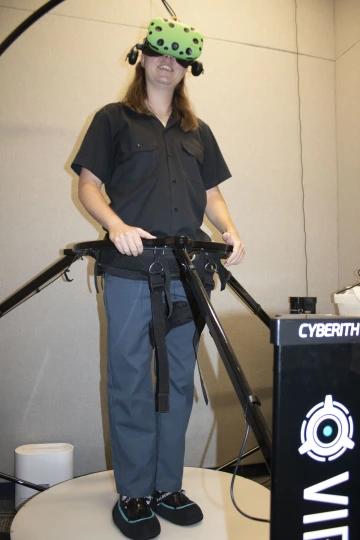
Research specialist Joshua Garren demonstrates the lab’s virtual reality treadmill setup.
McKenna Manzo
While the current research focused on younger adults, Ekstrom and his team are expanding the study to include older adults to explore how aging affects these same connections.
“Older adults tend to learn a little slower, so our next step is a longer training program,” Ekstrom said. “We want to know if strengthening these connections could help preserve navigation and memory skills that often decline with age.”
Zheng said this research also offers an opportunity to compare two key areas of her work — memory and navigation — and how they interact in the brain.
“To me, it’s a good opportunity to compare two related but different topics,” she said. “I’ve been working in the episodic memory area for many years, and now that I’ve joined Dr. Ekstrom’s lab, I’ve started doing research on navigation. This study helps me understand how these two important functions in our daily lives connect and how they differ from each other.”
She added that while this study focuses on younger participants, it can still inform her long-term goal of studying aging and memory loss.
“This gives me new insight into how to understand older adults and how their spatial memory might differ,” Zheng said.
Toward rehabilitation and prevention
The findings open new questions about how short-term training might influence the brain’s memory and navigation systems over time. Ekstrom says the study reinforces a hopeful message that the brain remains capable of change even in adulthood.
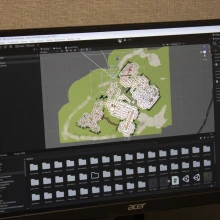
A computer prompt guides participants through a virtual navigation task.
McKenna Manzo
“Our long-term goal is to apply this knowledge to rehabilitation,” he said. “If we can understand how to keep the brain’s navigation system active, maybe we can slow or even prevent cognitive decline.”
For Zheng, the project is also deeply personal and scientific.
“I’ve always been fascinated by how memory works,” she said. “By comparing how memory and navigation connect in the brain, we can better understand not just how we think, but how we can help people maintain those abilities as they age.”
The path forward
Future studies will test whether memory and navigation training can translate to real-world improvements, such as finding new routes or remembering daily tasks.
“It’s one thing to see changes in the lab,” Ekstrom said. “But the big question is: can this training help people in everyday life — or even protect them from dementia? That’s what we’re working toward.”
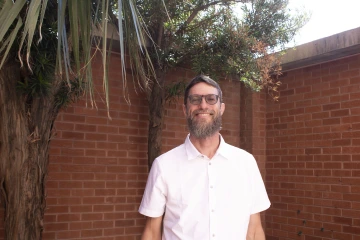
Dr. Arne Ekstrom
For both researchers, the motivation is clear.
“About 15 to 20 percent of older adults will develop some form of dementia,” Ekstrom said. “If our work can make even a small difference in that, it’s worth it.”
To learn more about the Human Spatial Cognition Laboratory and its studies, click here.

